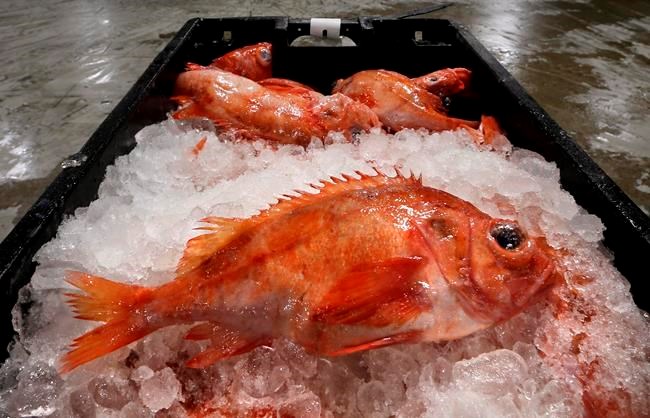HALIFAX — It’s been 26 years since dwindling stocks prompted the federal government to close the once lucrative redfish fishery in the Gulf of St. Lawrence, but now a rebound in the population has industry players positioning themselves to get in on what they hope will be a windfall.
The centre of attention is a large section of the gulf known as Unit 1, stretching from the western coast of Newfoundland across to Quebec's Gaspé Peninsula and down toward the northern tip of Cape Breton.
A federal Fisheries Department moratorium on commercial fishing of redfish was imposed in the area in 1995 and has remained in place ever since. But from 2011 to 2013, research showed that three robust redfish cohorts had propelled growth in the overall stock.
One theory is that the fish are doing well in the warming waters of the gulf. Caroline Senay, a Fisheries Department biologist, says scientists aren’t sure what factor — or combination of factors — helped the redfish population spike the way it has.
“We don’t have a lot of information to try to really do some strong correlation or to really understand what was special in 2011,” she said in a recent interview. "We know that the gulf is warming quite quickly. It seems that redfish, contrary to other species, they’re doing pretty well in these new environmental conditions."
So well, in fact, they’ve reached “historic highs,” said Kris Vascotto, executive director of the Atlantic Groundfish Council, which represents year-round offshore harvesters in Atlantic Canada.
“There's probably … more redfish in the Gulf of St. Lawrence now than we've ever seen in our recorded history,” he said during a recent interview.
The reopening of the redfish fishery is still thought to be a few years away, but the provinces surrounding the section of the Gulf, including Newfoundland, Quebec and Nova Scotia, are looking to get a bigger piece of the potentially lucrative fishery.
Nova Scotia has made clear it is not interested in surrendering any of its historic share.
“Others are seeking to increase their share of the fishery by reducing Nova Scotia’s long-held share. That is not fair, nor is it good fisheries management,” Bruce Nunn, the provincial Fisheries Department spokesperson, said in an email.
In a small index fishery that has been authorized to assess redfish stocks, about three-quarters of the allowable catch is assigned to offshore operators. Five Nova Scotian companies have nearly 40 per cent of the offshore catch while the Quebec operator Madelipeche has just over 30 per cent and Newfoundland and Labrador’s Ocean Choice International has about 12 per cent. New Brunswick-based companies currently hold 7.5 per cent of the offshore allocation.
“We expect the federal government to treat Nova Scotians fairly and not make decisions that would reduce our share,” Nunn said.
The Fish, Food and Allied Workers Union, a trade union in Newfoundland and Labrador, released a statement last month saying the Unit 1 redfish fishery is expected to be an important generator for the economy, but only if inshore harvesters get a fair shake from the Fisheries Department.
Keith Sullivan, president of FFAW-Unifor, said in a statement that Ocean Choice Internationalcurrently has exclusive access to redfish and other fish species in another fishing area, so the company doesn't need redfish from Unit 1 for economic viability. "But dozens of communities and a thousand workers in the inshore will depend on it,” he said.
Leaving aside concerns about market share, Vascotto said this is a chance for the fishery to become a sustainable part of Atlantic Canada’s economic structure while avoiding the same overfishing that led to the current moratorium.
“You are looking at a high-volume fishery,” he said. “It's in very, very good shape. You can plan for decades, not just a flash in the pan type of fishery. So really, there's an incentive to go slow, do it right and create the conditions where you can maximize value and minimize impact to the fishery.”
DFO spokesperson Kariane Charron said in an email the agency hasn’t set a date for the reopening of the commercial redfish fishery, but it has been working with an advisory committee, Indigenous people, scientists, stakeholders and provinces to prepare for a “post-moratorium” commercial harvest. She said the deadline for submissions for input from stakeholders is Monday.
This report by The Canadian Press was first published Nov. 14, 2021.
---
This story was produced with the financial assistance of the Facebook and Canadian Press News Fellowship.
Danielle Edwards, The Canadian Press



